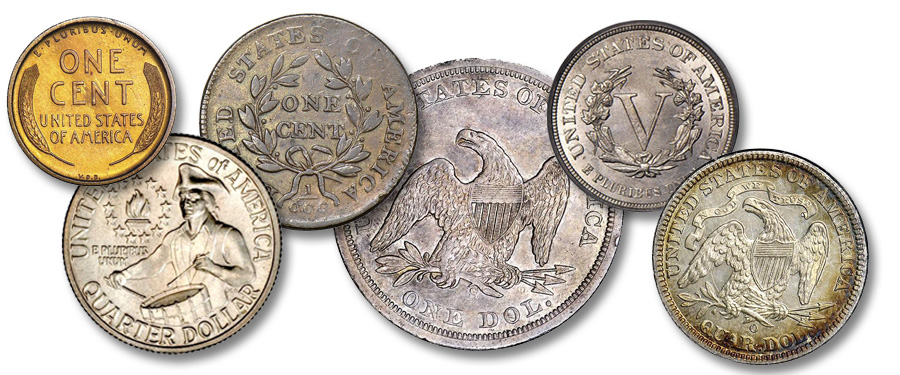
There are many instances in American numismatics in which a coin can be viewed from the reverse (or dateless side) and because the reverse is so distinctive, the obverse date can be determined — that is if you have a good knowledge of die varieties and types.
Here I will give clues concerning five (well, six with the bonus question) different United States coins that can be identified by their reverses. See how many you can get.
1. On the reverse of this quarter dollar we see a drummer boy. The obverse is dated:
a. 1932
b. 1876
c. 1994
d. 1776-1976
2. Holding a large copper cent in our hand, we noticed that the reverse is somewhat blundered. There is only one stem (instead of two) to the wreath, UNITED seems to read as IINITED, and the fraction instead of being 1/100 is the mathematically meaningless 1/000. Without turning it over we know that the obverse must bear the date:
a. 1793
b. 1799
c. 1801
d. 1804
3. This Liberty Seated dollar has no motto on the reverse, as IN GOD WE TRUST would not be added until 1866. Below the eagle is a tiny S mintmark. We must conclude that the date on the obverse could only be:
a. 1840
b. 1859
c. 1861
d. 1875
4. On the reverse of this Lincoln cent at the bottom rim are the bold initials V.D.B. for Victor David Brenner. Accordingly, the obverse must be dated:
a. 1909
b. 1914
c. 1931
d. 1955
5. The reverse of this Liberty Head nickel has the letter V to indicate the denomination, but not the word CENTS.
a. 1907
b. 1884
c. 1913
d. 1883
6 Bonus Question: We are holding a Liberty Seated quarter dollar. Above the eagle on the reverse, on a ribbon, is the motto IN GOD WE TRUST. Below the eagle is an O mintmark. Seeing this we can state with confidence that the obverse of this coin is dated:
a. 1866
b. 1873
c. 1879
d. 1891
Answers: 1-d, 2-c, 3-b, 4-a, 5-d, 6-d.





